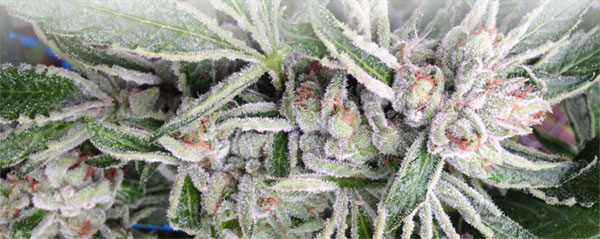Study of Bloom Booster Fertilizers
Abstract
Nutrients are required by plants to grow. During the different stages of plant life, nutrients are used in variable proportions. When plants are blooming, or in the flowering cycle, phosphorus (P) and potassium (K) are utilized by plants to help develop flowers and seed pods. We analyzed the chemical makeup of popular bloom fertilizers, and reported their benefits to plants in our study. Our hypothesis was that certain bud foods would perform at a higher efficiency than others, when fed to cannabis plants in a controlled environment.
Process
During our research the major nutrients NPK were the primary basis for evaluation. Minor nutrients and micro nutrients were also considered, however their use by plants is not needed as much, hence the names.
Cannabis is a dioecious plant consisting of separate male and female varieties. The female cannabis plant develops buds, or flowers as part of it's natural growth process. Seedless buds, known as sensimilla, are the most desired by legal, medical and recreational cannabis users. As a result, our study focused on the effects of fertilizer on the female cannabis plant.
Cannabis cultivators in the United States and internationally often aim to increase harvest yields. While part of the yield is surely strain dependent, correct application of flowering fertilizers help to increase bud weight, resulting in heavier harvest yields. Thus, choosing the a suitable bloom fertilizer for plants is essential. In order for the grower to see a significant increase, a regular application regimen is setup to match the marijuana plant's growth pattern.
Required Nutrients for Cannabis

Flowering cannabis requires a small amount of nitrogen, along with a moderate amount of phosphorus and potassium as bud food.
Nitrogen
Nitrogen is actually a gas element. When nitrogen exists from the ground as well as venting neighboring a plant, the flower incorporates that nitrogen to make sure you tremendously support assist it is very rich brand-new advancement.
Crops saturated during nitrogen will present an excellent kind of glowing oriental color, although for the cannabis vegetation reduced nitrogen can bring a longer growth rate, or flowering cycle. Nitrogen is also known to cause stretching in buds if over-applied.
Phosphorus
Phosphorus is a secure component required in the DNA makeup of the cannabis species. Adequate degrees of phosphorus dished up plant’s ground pairing might help enhance that flowers framework, at the time of unfolding specifically.
Parts of the marijuana plant including stalks, buds and weed are all maintained a healthy diet plan of phosphorus. The element contributes to weed plants having the ability to source rough, dense bud.
Potassium
Keeping enough potassium inside the ground will help some marijuana cannabinoids and sugar be tasty and lovely. Potassium is generally most crucial to become applied through the flowering stage, and might add on the way to more significant makes of massive bud plant life.
Other Nutrients
Along with NPK major nutrition, the various micro nutrients and important minerals that are vital pertaining to healthy plant production. A large number of multi-purpose plant fertilizers are very well stable it is advisable to consist of a well balanced diet of nutrients for buds.
Cannabis plant fertilizers are actually determined by the current advancement of a cannabis plant. Hence the numerous flowering fertilizers marketed towards the cannabis industry.
Research Findings
Through the start of the bud plant progress, a healthy nutrition regime abundant with nitrogen is going to be expected. Large nitrogen nutrients put together with a good average level of phosphorus and a little quantity of potassium performed greatest in our controlled study. Other nourishment was provided in the form on liquid food and foliar feeding. Our recommended fertilizer numbers were low in nitrogen and high in phosphorus and potassium. Reference the full list here: best bloom booster.
We also provided plants sufficient degrees of magnesium (mg) and calcium (ca) supplements, in the event that the plants may be deficient in aforementioned nutrients.
Our agenda to supply the weed crops is definitely variable, as soil composition may be different at all locations. For example, an organic soil may contain more long-term nutrients from organic matter in the soil, such as humus, compost and worm castings. Comparatively, sterile growing mediums may need a more frequent dosing of liquid nutrients during the cannabis plant's bud cycle. Growers getting plants for maximum bud yield should assess their nutrient requirements along with considering the fertilizer mixes that need to be conjoined with water soluble nutrients in order to nourish plants.